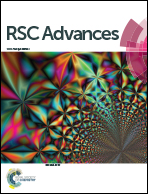Synthesis and dielectric properties of the eco-friendly insulating gas thiazyl trifluoride†
Abstract
Sulfur hexafluoride (SF6), which is known as a superior electrically insulating and arc-quenching medium, plays a decisive role in the modern transmission and distribution network of electric energy, especially in high-voltage power networks. However, the ever-increasing usage of SF6 also leads to the continuous escalation of atmospheric SF6 levels, which is considered to be the main cause of the greenhouse effect. To decrease this environmental impact, eco-friendly alternatives to SF6 have been researched for decades. To date, no significant success has been made regarding replacement gases for transmission networks. Some potential alternatives have comparatively lower global warming potential (GWP) but involve technical trade-offs. Thiazyl trifluoride, which has some excellent chemical and electric properties, is a novel substitution candidate for SF6. In this article, an efficient synthetic route starting from sulfur monochloride and followed by ammonization and fluorination was proposed. The structures of the intermediates and the target products were determined by X-ray diffraction (XRD), infrared spectroscopy (IR), and gas chromatography-mass spectrometry (GC-MS). The effects of some determining factors on the yield and purity, including the molar ratio of the reactants, recrystallization conditions and condensation temperature, were also investigated. The results showed that the overall yield of thiazyl trifluoride was approximately 25%, while the purity could be up to 90.6% under optimal conditions.



 Please wait while we load your content...
Please wait while we load your content...